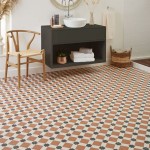Glue For Vinyl Flooring Repair: A Comprehensive Guide
Vinyl flooring, prized for its durability, affordability, and aesthetic versatility, is a popular choice for both residential and commercial spaces. However, despite its resilient nature, vinyl flooring is susceptible to damage over time. Issues such as tears, bubbles, and loose edges can arise, often requiring repair to maintain the floor's integrity and appearance. Glue specifically formulated for vinyl flooring repair plays a critical role in addressing these problems effectively.
This document will provide a comprehensive overview of glue used for vinyl flooring repair, covering its types, applications, selection criteria, and proper application techniques. Understanding these aspects is crucial for achieving a durable and visually appealing repair.
Types of Glue Used for Vinyl Flooring Repair
Various types of adhesives are employed in vinyl flooring repair, each possessing distinct properties that make them suitable for different repair scenarios. Selecting the appropriate glue is paramount for ensuring a successful and long-lasting bond.
Acrylic Adhesives: These water-based adhesives are widely used for general vinyl flooring repairs. Acrylic adhesives offer several advantages, including low odor, ease of application, and affordability. They are suitable for bonding vinyl flooring to various substrates, such as concrete, plywood, and existing vinyl surfaces. Acrylic adhesives typically provide a flexible bond, which helps to accommodate minor movements in the subfloor. However, they may not be ideal for high-moisture environments or for repairs requiring exceptional strength.
Epoxy Adhesives: Epoxy adhesives are two-part systems that, when mixed, create a very strong and durable bond. They are known for their excellent resistance to water, chemicals, and high temperatures. Epoxy adhesives are often used for repairs in areas prone to moisture, such as bathrooms and kitchens. Due to their strength, they are also suitable for repairing more significant damages, such as tears or cracks in the vinyl flooring. A key consideration when working with epoxy adhesives is their relatively short working time and the need for accurate mixing of the two components.
Polyurethane Adhesives: Polyurethane adhesives are another class of high-performance adhesives suitable for vinyl flooring repair. They offer excellent flexibility, impact resistance, and adhesion to a wide range of materials. Polyurethane adhesives are often used in applications where the flooring is subjected to heavy traffic or significant movement. They also exhibit good resistance to moisture and temperature variations. Similar to epoxy adhesives, polyurethane adhesives may require specific application techniques and longer curing times.
Contact Adhesives: Contact adhesives are applied to both surfaces being bonded and allowed to dry before they are brought together. They form an instant bond upon contact, eliminating the need for clamping or prolonged curing times. Contact adhesives are commonly used for repairing loose edges or seams in vinyl flooring. They are particularly useful when a strong initial tack is required. However, contact adhesives may be less forgiving than other types of adhesives, as realignment after contact is difficult.
Hybrid Polymer Adhesives: These relatively newer adhesives combine the benefits of various other types, offering excellent adhesion, flexibility, and resistance to moisture and chemicals. Hybrid polymer adhesives often have low VOC (volatile organic compound) content and are considered more environmentally friendly. They are suitable for a wide range of vinyl flooring repairs, including those in high-moisture areas or those requiring superior strength. Their versatility and performance characteristics make them an increasingly popular choice for professional flooring installers.
Key Considerations When Selecting Glue for Vinyl Flooring Repair
Choosing the right glue for vinyl flooring repair is a critical decision that can impact the longevity and appearance of the repaired area. Factors to consider include the type of damage, the location of the repair, the subfloor material, and the environmental conditions.
Type of Vinyl Flooring: The type of vinyl flooring being repaired can influence the choice of adhesive. Sheet vinyl, vinyl tiles, and luxury vinyl planks (LVP) may have different adhesive requirements. Some adhesives are specifically formulated for certain types of vinyl flooring. Always refer to the manufacturer's recommendations for compatible adhesives.
Type of Damage: The nature and extent of the damage will dictate the type of adhesive needed. Minor repairs, such as lifting edges or small bubbles, may be addressed with a flexible acrylic or contact adhesive. More significant damages, such as tears or cracks, may require a stronger adhesive like epoxy or polyurethane.
Subfloor Material: The type of subfloor to which the vinyl flooring is bonded is a crucial factor. Different adhesives exhibit varying degrees of adhesion to different subfloor materials, such as concrete, plywood, or existing vinyl. Ensure that the chosen adhesive is compatible with the specific subfloor material to achieve a strong and lasting bond. Preparing the subfloor properly, by cleaning and leveling it, is also essential.
Environmental Conditions: The environmental conditions in which the repair is being performed can also influence the choice of adhesive. Areas prone to high moisture levels, such as bathrooms or kitchens, require moisture-resistant adhesives like epoxy or polyurethane. Temperature fluctuations can also affect the performance of some adhesives. Consider the expected temperature range when selecting an adhesive.
VOC Content: Volatile organic compounds (VOCs) are chemicals released into the air during and after the application of adhesives. Some VOCs can have adverse health effects. When selecting an adhesive, consider its VOC content. Opt for low-VOC or VOC-free adhesives whenever possible, especially in enclosed spaces or for individuals with sensitivities to chemicals.
Curing Time: The curing time of an adhesive is the amount of time it takes for the adhesive to reach its full strength. Curing times can vary significantly depending on the type of adhesive and environmental conditions. Consider the curing time when planning the repair project. If the area needs to be used quickly, choose an adhesive with a shorter curing time. Ensure that the repaired area is protected during the curing process.
Ease of Application: The ease of application of an adhesive can also be a factor in the selection process. Some adhesives, such as acrylic adhesives, are relatively easy to apply with a trowel or brush. Others, such as epoxy adhesives, require more precise mixing and application techniques. Consider your skill level and the complexity of the repair when choosing an adhesive.
Proper Application Techniques for Vinyl Flooring Repair Glue
Even the best adhesive will fail if not applied correctly. Adhering to proper application techniques is essential for achieving a strong, durable, and visually appealing repair.
Surface Preparation: Proper surface preparation is arguably the most critical step in the repair process. Thoroughly clean the areas to be bonded, removing any dirt, dust, grease, wax, or loose debris. Use a suitable cleaner and degreaser to ensure a clean bonding surface. For concrete subfloors, consider mechanically abrading the surface to improve adhesion. Ensure the subfloor is level and free from any cracks or unevenness. Fill any cracks or holes with a suitable patching compound and allow it to cure completely before applying the adhesive.
Adhesive Application: Apply the adhesive according to the manufacturer's instructions. Use the recommended tools, such as a trowel, brush, or applicator gun, to ensure even and consistent coverage. Apply the adhesive in a thin, uniform layer. Avoid applying too much adhesive, as this can lead to bubbling or oozing. For contact adhesives, apply the adhesive to both surfaces being bonded and allow them to dry to a tacky consistency before bringing them together. For epoxy or polyurethane adhesives, mix the components thoroughly according to the manufacturer's instructions and apply the mixture within its specified working time.
Bonding and Curing: Once the adhesive is applied, carefully position the vinyl flooring and press it firmly into place. Use a roller or hand roller to ensure good contact between the flooring and the subfloor. Remove any excess adhesive immediately with a damp cloth. Protect the repaired area from traffic and moisture during the curing process. Follow the manufacturer's instructions for curing time. In some cases, placing a weight on the repaired area can help to ensure a strong bond.
Seam Sealing: For sheet vinyl flooring repairs, sealing the seams is essential to prevent water penetration and maintain a seamless appearance. Use a seam sealer specifically designed for vinyl flooring. Apply the seam sealer according to the manufacturer's instructions. Clean any excess seam sealer immediately with a damp cloth.
Addressing Bubbles: If bubbles appear after the adhesive has been applied, try to release the trapped air by carefully puncturing the bubble with a small needle or utility knife. Apply pressure to the area to flatten the bubble. If the bubble persists, carefully lift the affected area and apply more adhesive underneath. Press the flooring back into place and roll it firmly.
Safety Precautions: Always follow the safety precautions recommended by the adhesive manufacturer. Wear appropriate personal protective equipment, such as gloves and eye protection. Work in a well-ventilated area to minimize exposure to VOCs. Avoid contact with skin and eyes. If contact occurs, rinse immediately with water. Keep adhesives out of reach of children and pets.
By understanding the different types of glue available, considering the key factors when selecting an adhesive, and adhering to proper application techniques, individuals can effectively repair vinyl flooring and restore its appearance and functionality.

Roberts 3 Oz Gray Wood Laminate And Vinyl Putty Pc7728 The Home Depot

Henry 12220 Vinyl Linoleum Floor Repair Adhesive 6 Oz Com

How To Repair Luxury Vinyl Plank Flooring The Palette Muse

Repair And Reglue Sheet Vinyl Floors Diy

Stop Creak 4 06 Fl Oz Squeaky Floor Repair Lubricant For Laminate Engineered And V Groove Wood Floors Pack Madsc480a The Home Depot

Floor Fix Pro 6 Pack

What S The Best Glue To Use For Vinyl Flooring Sprayidea

Fix A Floor 10 1 Oz Repair Adhesive Fix010 The Home Depot

How To Repair Luxury Vinyl Plank Flooring The Palette Muse

How To Repair Vinyl Flooring Fixing Sc Bubbles More
Related Posts








